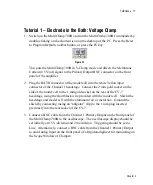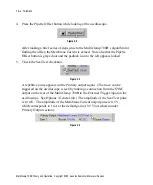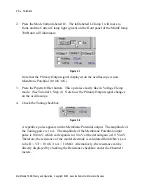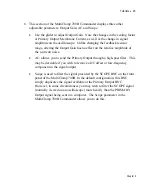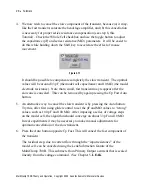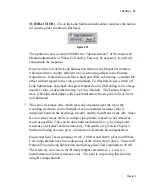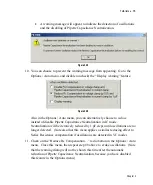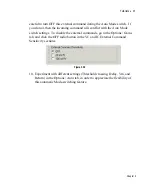
Tutorials
•
27
2. Check the Seal Test checkbox; a train of ~0.5 Volt transients decaying over
~2 ms will appear on the Primary Output trace. (These are more easily seen if
the oscilloscope is triggered using the SYNC output of the MultiClamp 700B.)
Figure 3.15
The fast component of the transients reflects the simulated electrode
capacitance (5 pF), while the slow component reflects the capacitance of the
simulated cell (33 pF). Following the 10 mV Seal Test step the transients
decay to a plateau of 10 mV, equivalent to a current of 20 pA. This yields a
resistance of 10 mV/20 pA = 500 M
Ω
, which is the “input resistance” of the
model cell. This can also be found by checking the Resistance checkbox under
the meters.
3. In a real cell, the holding potential would have been set prior to going to whole-
cell mode. Set the holding potential now by checking the Holding checkbox
and using glider control to apply a negative holding potential (
e.g.
–60 mV).
Figure 3.16
Chapter 3





